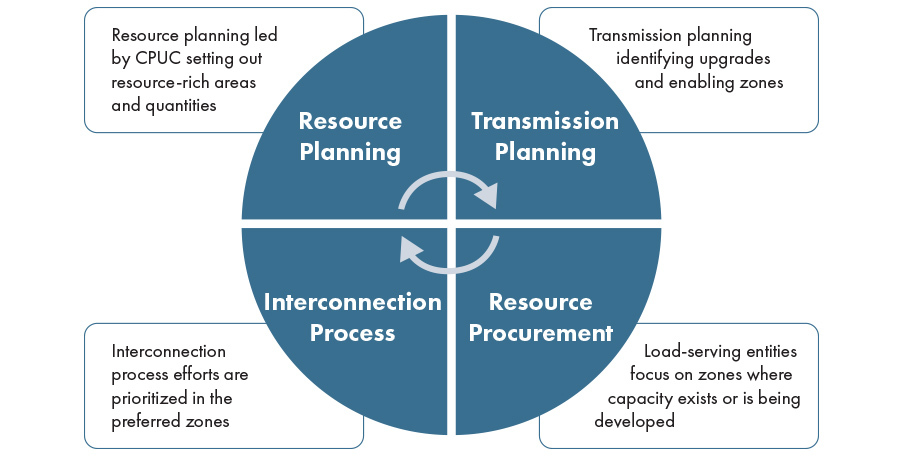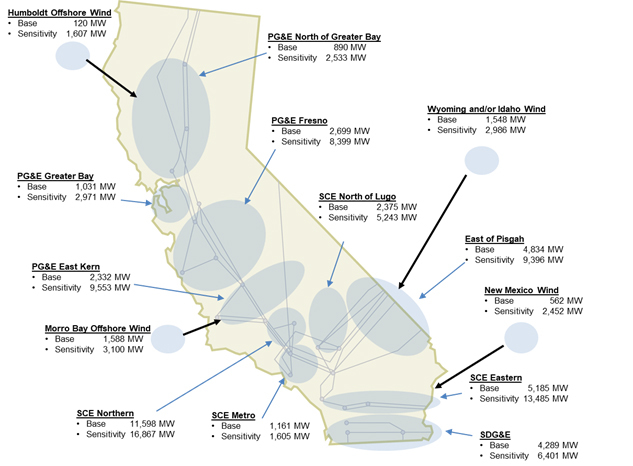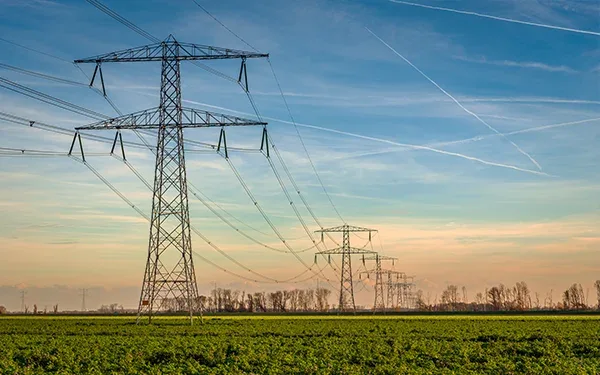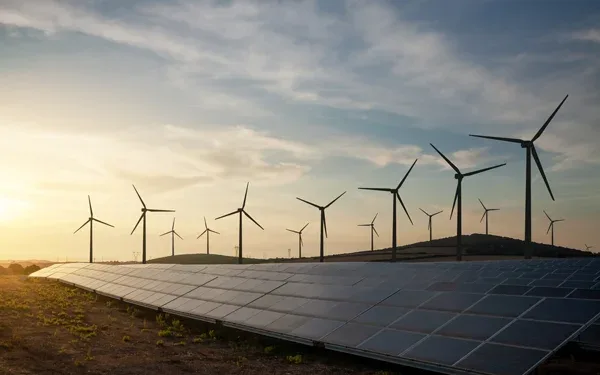Draft 2022-2023 Transmission Plan posted
Today, the California Independent System Operator (ISO) posted a draft of its 2022-2023 Transmission Plan. The plan reflects a more proactive and strategic approach to studying and recommending new transmission infrastructure needed to reliably and efficiently meet California’s clean-energy objectives over the next decade.
Developed in close collaboration with the California Public Utilities Commission (CPUC) and the California Energy Commission (CEC) – and reflecting input from load-serving entities and other key stakeholders – the new approach taken in this year’s plan is designed to better synchronize power and transmission planning, interconnection queuing and resource procurement.
The 2022-2023 transmission plan identifies additional transmission and resource capacity associated with designated zones that make the most economic and operational sense for such development and recommends 46 transmission projects costing an estimated $9.3 billion.

The vast majority of the projects will be built in California, supporting more than 40 gigawatts (GW) of new resource development identified by the CPUC as cost-effective and needed to meet the state’s clean-energy goals over the next 10 years. With electrification increasing in other sectors of the economy, most notably transportation and the building industry, even more new power will be required, with next year’s transmission plan anticipated to identify the need to add 70 GW by 2033. That number will eventually grow to 120 GW to align the state with its policy goal of a carbon-free power system by 2045.
While a significant investment will be required to complete the recommended transmission projects, actual build-out of the plan would be phased in over lead times of up to eight to10 years. Costs to consumers would translate to approximately 0.5 cents per kWh over the life of the projects, phased in through the rate-design process between utilities and their regulatory authorities as the new facilities come online.
The infrastructure investments provide significant reliability and economic benefits to California, bringing large amounts of reliable, decarbonized power to millions of consumers and industry throughout the state across all seasons of the year.
“This 2022-2023 transmission plan represents the next major installment of infrastructure investment required to meet California’s long-term clean energy goals,” said Elliot Mainzer, the ISO’s president and CEO. “In close coordination with regulatory agencies, load-serving entities and other key stakeholders, we endeavored to address the state’s reliability and policy needs in the most cost-effective and efficient way possible.”

A stakeholder call on the draft plan is scheduled for Tuesday, April 11. The ISO will then process written and verbal comments, make any necessary revisions and take the plan to the Board of Governors for approval in May.
The new, more proactive approach to this year’s Transmission Plan aligns with a Memorandum of Understanding outlining enhanced planning coordination that was signed in December by leaders of the ISO, CPUC and CEC. The agreement tightens linkages between power and transmission planning, interconnection queuing and resource procurement so California is better equipped to meet its reliability needs and clean-energy policy objectives required by Senate Bill 100. Signed into law in 2018, the bill established as state policy that eligible renewable energy and zero-carbon resources supply 100% of retail sales of electricity to California end-use customers and 100% of electricity procured to serve all state agencies by December 31, 2045.
As set out in the MOU, the CPUC will continue to provide resource planning information to the ISO. Using this information, the ISO develops a transmission plan, initiates the transmission projects and communicates to the electricity industry specific geographic zones that are being targeted for transmission projects along with the capacity being made available in each of those zones.
The CPUC will in turn provide clear direction to load-serving entities to focus their energy procurement in those key transmission zones in alignment with the transmission plan. To bring this more coordinated approach full circle, the ISO will also give priority to interconnection requests located within those same zones in its generation interconnection process.

The 2022-2023 transmission plan will enable critical generation and storage capacity, including:
- More than 17 GW of solar generation distributed in solar development regions across the state. These include the Westlands area in the Central Valley, Tehachapi, the Kramer area in San Bernardino County, Riverside County, and also in southern Nevada and western Arizona;
- More than 3.5 GW of in-state wind generation in existing wind development regions, including Tehachapi;
- More than 1 GW of geothermal development, primarily in the Imperial Valley and in southern Nevada;
- Access to battery storage projects co-located across the state with renewable generation projects, as well as stand-alone storage located closer to major load centers in the LA Basin, greater Bay Area, and San Diego, totaling over 13.5 GW;
- The import of more than 4.5 GW of out-of-state wind generation from Idaho, Wyoming and New Mexico, by enhancing corridors from the ISO border in southeastern Nevada and western Arizona into California load centers; and
- Up to 3 GW of central coast offshore wind generation prior to the retirement of the Diablo Canyon Power Plant, and up to 5 GW after the retirement.
The ISO-recommended transmission projects needed to integrate these generation and storage resources range in estimated cost from $4 million to $2.3 billion, for a total projected infrastructure investment of $9.3 billion. Most notably, these transmission projects include:
- A new 500 kV transmission line running west from the Arizona border into southern Imperial County, new 500 kV transmission lines angling up from southern Imperial County to northern San Diego and extending into the southern LA Basin, and upgrades to the existing 500 kV and 230 kV lines along the Interstate 10 (I-10) corridor. Together, these upgrades provide access to east Riverside County, Imperial County and Arizona solar generation, Imperial Valley geothermal, and New Mexico wind generation;
- A new 500 kV transmission line from southeastern Nevada to the eastern edge of the LA Basin and rebuilding of existing southeastern Nevada 230 kV transmission inside the ISO to 500 kV, providing access for Eldorado and Pisgah area solar generation, southeastern Nevada solar and geothermal generation, and Wyoming and Idaho wind generation;
- Upgrades to the Lugo–Victor–Kramer 230 kV transmission system to access north of Lugo solar development; and
- A host of smaller upgrades.
The graphic below shows the capacity in the zones enabled by this transmission plan, including both a “base” and a “sensitivity” number. Each year, the CPUC provides a base resource portfolio that the ISO is expected to use in determining the need for new transmission projects. The CPUC typically also provides one or more sensitivity portfolios with higher or different levels of resource development that the ISO studies to develop transmission capacity and cost information the CPUC then uses in the next annual cycle of resource portfolio development. Based on its longer-term planning analysis, the CPUC has already confirmed that this year’s sensitivity amounts will be the base in next year’s transmission plan. As a result, the network upgrades recommended for approval in this plan make the base amounts available, and also much of the sensitivity amounts. The remaining network upgrades to achieve the sensitivity amounts will be included in next year’s plan.
Transmission Planning Zones and Capacity

There are three different categories of transmission projects evaluated through the ISO’s planning process:
- Reliability-driven projects, which are those needed to reliably serve load in compliance with standards set by the North American Electric Reliability Corporation (NERC);
- Policy driven projects, needed to deliver renewable generation to load centers to meet state clean-energy goals; and
- Economic-driven projects, which will reduce the cost of energy to ratepayers by, for example, lowering grid congestion costs.
Following a rigorous and comprehensive analytical process, the 2022-2023 plan recommends 24 reliability driven projects required to address load growth and evolving grid conditions as the generation fleet transitions to increased renewable energy production. Total costs for the reliability projects is estimated at $1.76 billion.
The ISO also identified the need for an additional 22 transmission projects driven by the state’s energy policy goals. These total $7.53 billion. Lists of all the projects can be found in the plan on the ISO’s 2022-2023 transmission planning process webpage.
Although economic analysis is a component of the assessment of every potential project, the 2022-2023 plan does not recommend any transmission infrastructure as strictly economic-driven.
In parallel with the transmission planning changes being made and reflected in the plan, the ISO has been moving forward with corresponding changes to its generation interconnection process. The ISO released an issue paper and straw proposal on March 6, 2023 launching its 2023 Interconnection Process Enhancements initiative.
In recent years, given California’s ambitious decarbonization goals and the large quantities of new clean resources it will take to meet them, the ISO has been receiving hundreds of interconnection requests annually from potential resource developers. Many of these requests are located in areas that are not a priority in the state’s resource planning.
With the ISO’s interconnection queue inundated with applications, current processes need to be re-imagined to ensure resource procurement and queuing are effectively shaped and informed to take advantage of existing or planned transmission and interconnection capacity, and to align with the transmission upgrades necessary for longer-term resource development.
Taken together, the more proactive transmission plan and interconnection queue improvements are expected to help onboard approximately 7,000 MW of new resources every year as we work to meet the goals of SB100 in a reliable, affordable and equitable fashion.


